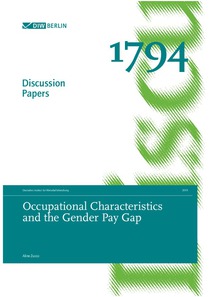Occupational characteristics and the gender pay gap

Deutsches Institut für Wirtschaftsforschung, Berlin
DIW - Berlin
2019
35 p.
wage deduction ; gender ; gender discrimination ; occupation
Discussion Papers
1794
Wages and wage payment systems
English
Bibliogr.
"Germany has a large persistent Gender Pay Gap of 21 %; although this gap is not constant across occupations. The question arises why some occupations have large Gender Pay Gaps while others have only small gaps. Using data from the Structural Earnings Study merged with occupational task information provided by the Federal Labor Office, this paper aims to uncover the relationship between occupational characteristics and the Gender Pay Gap. To do so, I apply a two-step approach, where the first step uses individual characteristics to estimate the adjusted occupation-specific Gender Pay Gaps. In the second step, these gaps are regressed on occupational characteristics. I find that wage differences between men and women are lower in occupations with linear earnings and in occupations with a large share of public firms. Moreover, we observe that an increasing share of persons with supervisory power is linked to larger wage differences between men and women, which indicates the presence of a glass ceiling. Finally, the Gender Pay Gap is higher in occupations with routine tasks. Moreover, the findings suggest that the more that employees can be substituted with other employees, the lower is the Gender Pay Gap. Hence, this study extends previous findings on occupation-specific Gender Pay Gaps by linking them to occupational characteristics on a more general level."
Digital
The ETUI is co-funded by the European Union. Views and opinions expressed are however those of the author(s) only and do not necessarily reflect those of the European Union or the ETUI.